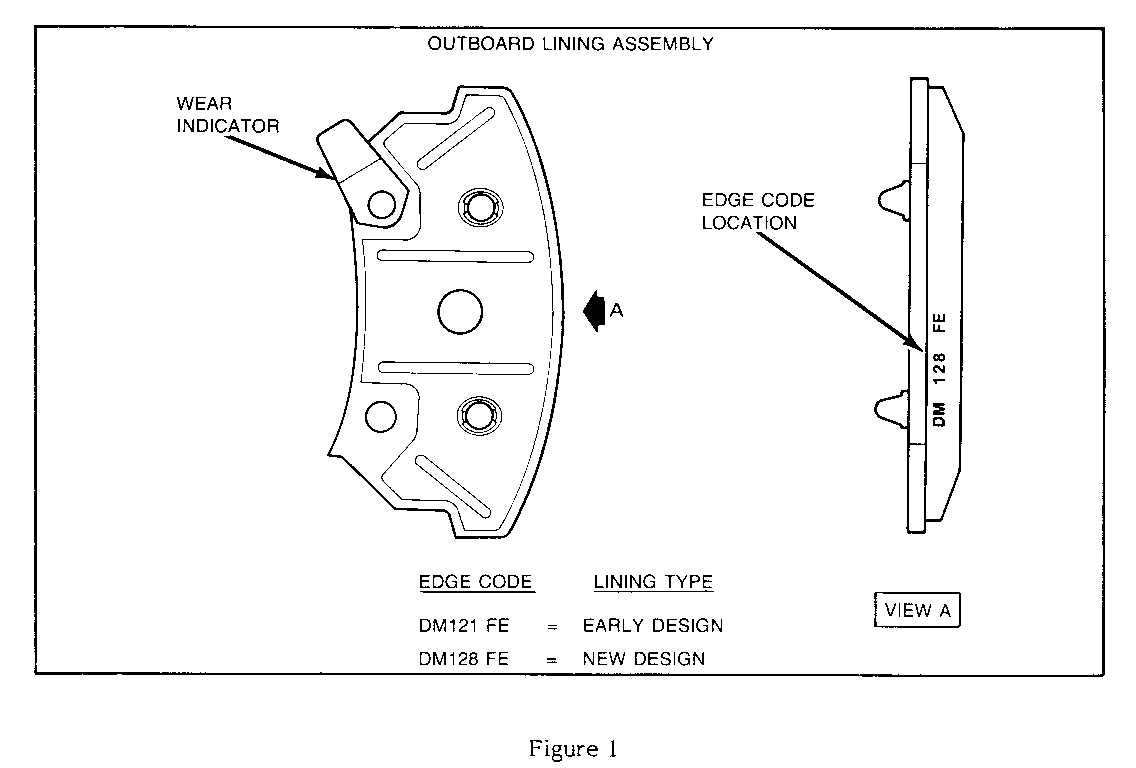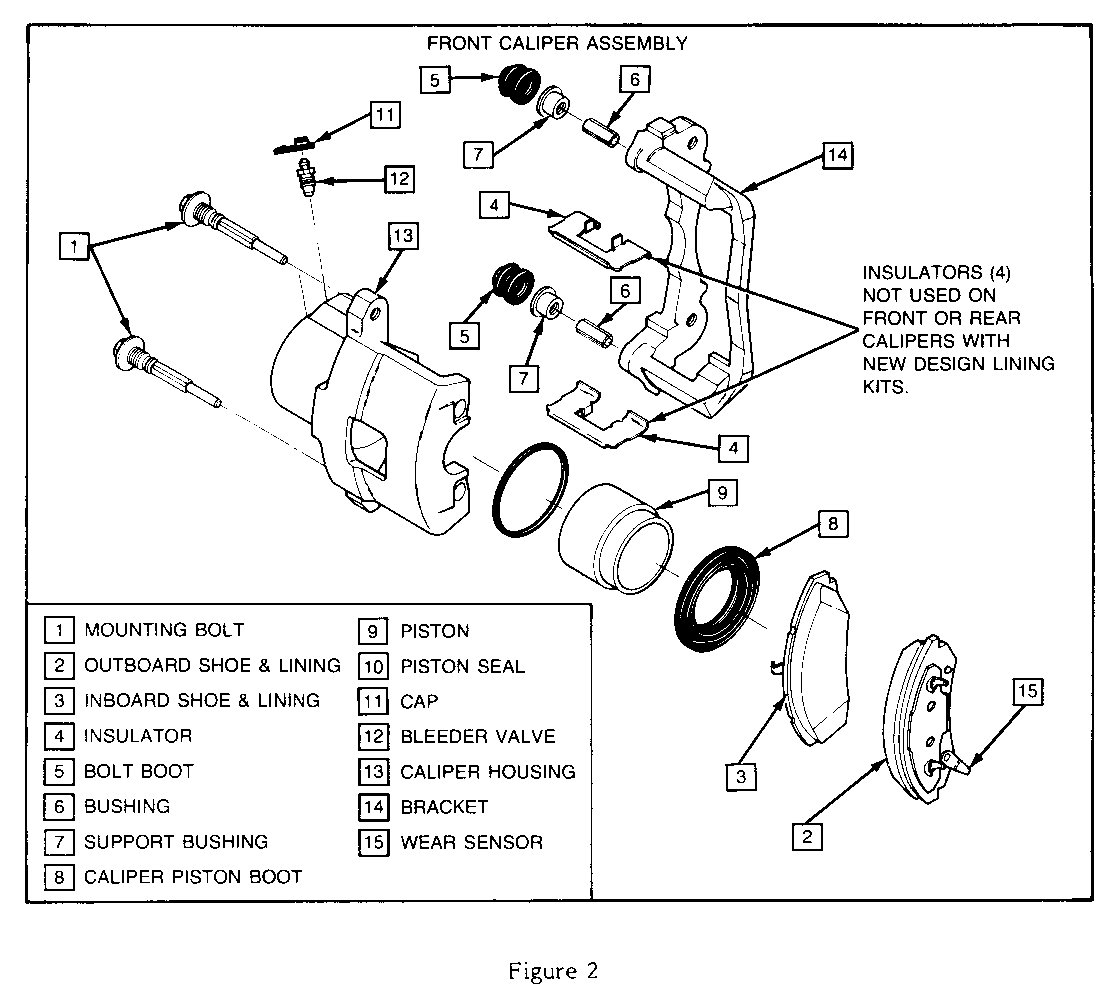BRAKE LINING MAT'L CHANGE NEW P/N REDUCES BRAKE NOISE

MODELS AFFECTED: 1986-87 RIVIERAS
NOTICE - This bulletin supersedes 87-5-9 dated May, 1987. Kit Part No. 12311441 is incorrect. It should be 12321441. Please discard original bulletin and replace it with this one.
A production change was made to the front and rear brake linings used on the 1987 Rivieras, effective at the following VIN breakpoint:
Riviera HU412306
This change includes a new lining material and extended shoes which eliminate the need for the stainless steel shoe abutment insulators. The new shoe and lining may be identified by the following methods:
LINING EDGE CODE
The lining edge code, which is stamped in the lining material at the locations shown in Figure 1, may be used to identify the new shoe and lining assemblies. The new design shoe and lining assemblies use the edge code "DM 128 FE", while early production linings include the edge code "DM 121 FE".
LINING WEAR INDICATOR COLOR
New design shoe and lining assemblies may also be identified by the color of the lining wear indicator, as shown in Figure 1. New lining kits have a blue wear indicator, while early production linings include wear indicators which are black or gray.
Disc brake noise may be reduced on models built prior to the above breakpoints by installing the new design linings. These shoe and lining kits are available from GMSPO using the following part numbers:
KIT TYPE PART NUMBER
Front 12321440 Rear 12321441
The length of the shoe in these kits has been increased so that the stainless steel shoe abutment insulators, shown in Figure 2, are no longer required. When installing the new lining kits, discard the shoe abutment insulators. An instruction sheet is included with all new lining kits. Refer to the appropriate Service Information Manual, Sections 5B3 and 5B7, for installation procedures.


General Motors bulletins are intended for use by professional technicians, not a "do-it-yourselfer". They are written to inform those technicians of conditions that may occur on some vehicles, or to provide information that could assist in the proper service of a vehicle. Properly trained technicians have the equipment, tools, safety instructions and know-how to do a job properly and safely. If a condition is described, do not assume that the bulletin applies to your vehicle, or that your vehicle will have that condition. See a General Motors dealer servicing your brand of General Motors vehicle for information on whether your vehicle may benefit from the information.
